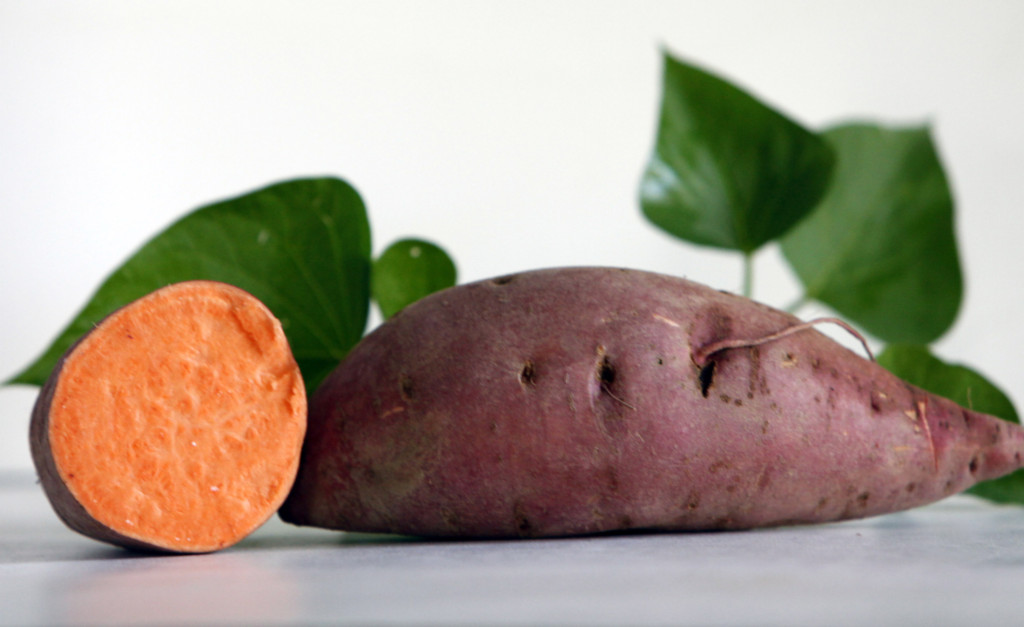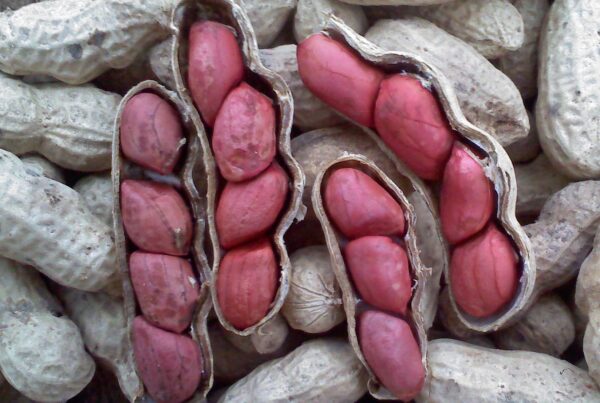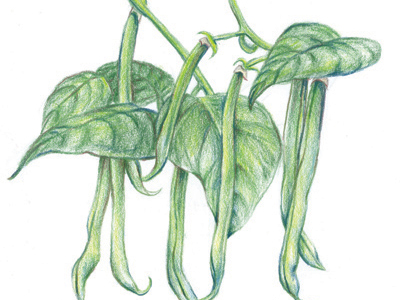 Sweet potatoes are a wonderful crop for your garden or farm. They are delicious and can be served in numerous ways, including eating the tender growing shoots and leaves raw or cooked. They are nutritious, being low in fat and sodium, but high in fiber, carbohydrates, potassium, manganese, and vitamins A and C.
Sweet potatoes are a wonderful crop for your garden or farm. They are delicious and can be served in numerous ways, including eating the tender growing shoots and leaves raw or cooked. They are nutritious, being low in fat and sodium, but high in fiber, carbohydrates, potassium, manganese, and vitamins A and C.
Folks wanting to grow and store their own food appreciate that sweet potatoes can be stored for months without refrigeration. They catch the attention of customers at farmers’ markets. Sweet potato vines have attractive foliage and make an interesting container plant. You can grow sweet potatoes for winter greens indoors in a sunny window. You can even feed them to farm animals and dogs (carefully).
We at Southern Exposure Seed Exchange grow them for the pure enjoyment, but they’re also an important part of making our farm more self-sufficient.
Planting & Growing from Slips

Acorn Community Farm in Mineral, Virginia, Tuesday, October 25, 2011.
Sweet potatoes are a tender, heat-loving vine that generally needs at least 4Â months of frost-free growing. Even early varieties need at least 90 days from when the slip (i.e., young plant) is transplanted until the full-size tubers can be harvested.
Most gardeners start with slips purchased from a local garden center or reputable mail order source. Southern Exposure Seed Exchange sells certified organic slips of varieties that grow well in the Mid-Atlantic and Southeast, as well most regions of the U.S. You can also grow slips from sweet potatoes in a glass jar on a sunny kitchen window or even cut 8-inch slips from a friend’s plants growing in the garden.
Sweet potatoes thrive in hot weather. In central Virginia, most gardeners plant mid-May to mid-June. Don’t plant slips in cool soil. Wait until the soil temperature is 60-65°F at a depth of 4-inches. Use a soil thermometer to verify. (A soil thermometer is inexpensive and useful for many other crops in your garden). You can use black plastic mulch for pre-warming the soil at higher elevations and USDA growing zones lower than 6. Apply it to your prepared beds 3 weeks before planting, remembering to plan in advance for watering or irrigation. In addition to warming the soil, the plastic will suppress weeds until the sweet potato vines really take off and shade out weeds as the season progresses.
Sweet potatoes prefer loose, well-drained soil that’s not too fertile, with pH of 5.8-6.2. They will tolerate pH from 4.5-7.5, which is a pretty impressive range. Sweet potatoes don’t like wet feet. Compacted, heavy, or lumpy soil can result in misshapen, undersized tubers. If you have clay soil or drainage problems, work in lots of compost and make raised beds or planting ridges 8 to 12-inches high. As with other crops, a three or more-year rotation is a good idea to control disease.
It’s important to plant your slips quickly after they arrive, but wait for warm soil and warm, settled weather before planting outside. If the weather or the soil is still too cold or your garden is not ready to plant, heel in the slips (i.e., loosely plant them) in a warm temporary location (e.g., in a flat or nursery bed) for transplanting later. Remember to water them.
Don’t worry if your mail order slips don’t have roots when they arrive. With good care new roots will develop rapidly. Transplant your slips outdoors with 2 to 4 leaf nodes below ground (with the leaves pulled off the nodes). That’s about 2 to 4 inches deep. Leave at least 2 leaves above ground. More is better. Space plants 10 to 18 inches apart in rows at least 3 feet apart (to make room for the sprawling vines). Plants spaced closer together will tend to produce smaller tubers; wider spacing produces larger ones, especially over a long growing season. Commercial growers pay a lot of attention to spacing to maximize growing the most marketable size and shape of tubers. If you are using black plastic, cut a hole for each plant and make some other small holes for rainwater to get in or use drip irrigation.
Transplant in the evening and water them in immediately. (Water the soil before planting as well, if the weather is warm and dry.) Once they really get growing, sweet potatoes are fairly drought-tolerant. However, it is very important to maintain sufficient moisture for at least the first 20 or so days while roots are developing. Some sources say 40 days. Everyone agrees that, as with most of your garden, you will get a higher yield and better-quality tubers if your plants get about one inch of water a week, whether from the sky or from the hose. If you are growing plants with black plastic, drip irrigation is the first choice.
Keep the plants free of weeds until they are established and can shade out competition. Cultivate carefully to avoid damaging shallow roots. Side dress each plant with a shovel full of compost for better yields and larger sweet potatoes (but sweet potatoes generally produce well even with low fertility).
Deer are fond of sweet potato vines, so protect your plants from browsers. Sweet potatoes grow well in containers and some have attractive, showy foliage. Just be sure to use large containers with good quality potting soil and don’t let them dry out! A Korean Restaurant owner in Charlottesville Virginia grew sweet potatoes strictly for the edible stems and young shoots which she used for cooking all summer. (Harvest the older but still tender leaves and leave the rest to grow and produce your tubers). Ready for a new green? Try this quick recipe for cooking the delicious mild spinach-like sweet potato greens.
Sautéed Sweet Potato GreensÂ
½ lb. sweet potato greens (including stems)
1Â small white onion, diced
1 clove garlic, minced
2 Tbsp extra-virgin olive oil
Salt and pepper to taste
1½ Tbsp maple syrup (optional)
- REMOVEÂ sweet potato leaves from stems and set aside. Remove smaller stems from the larger, tougher stems. Discard the larger stems and roughly chop the smaller stems.
- HEAT olive oil in medium-sized pan over medium high heat. Add onion and garlic then sauté until just softened, about 3 minutes.
- ADD stem pieces and sauté until tender, about 5 minutes.
- ADD leaves, salt and pepper to taste, and maple syrup. Sauté until leaves are wilted, about 2 minutes. Serve.
I’ll be back in the fall with a second section of this article covering Harvesting, Curing, Storage, and Cooking with Sweet Potatoes.







